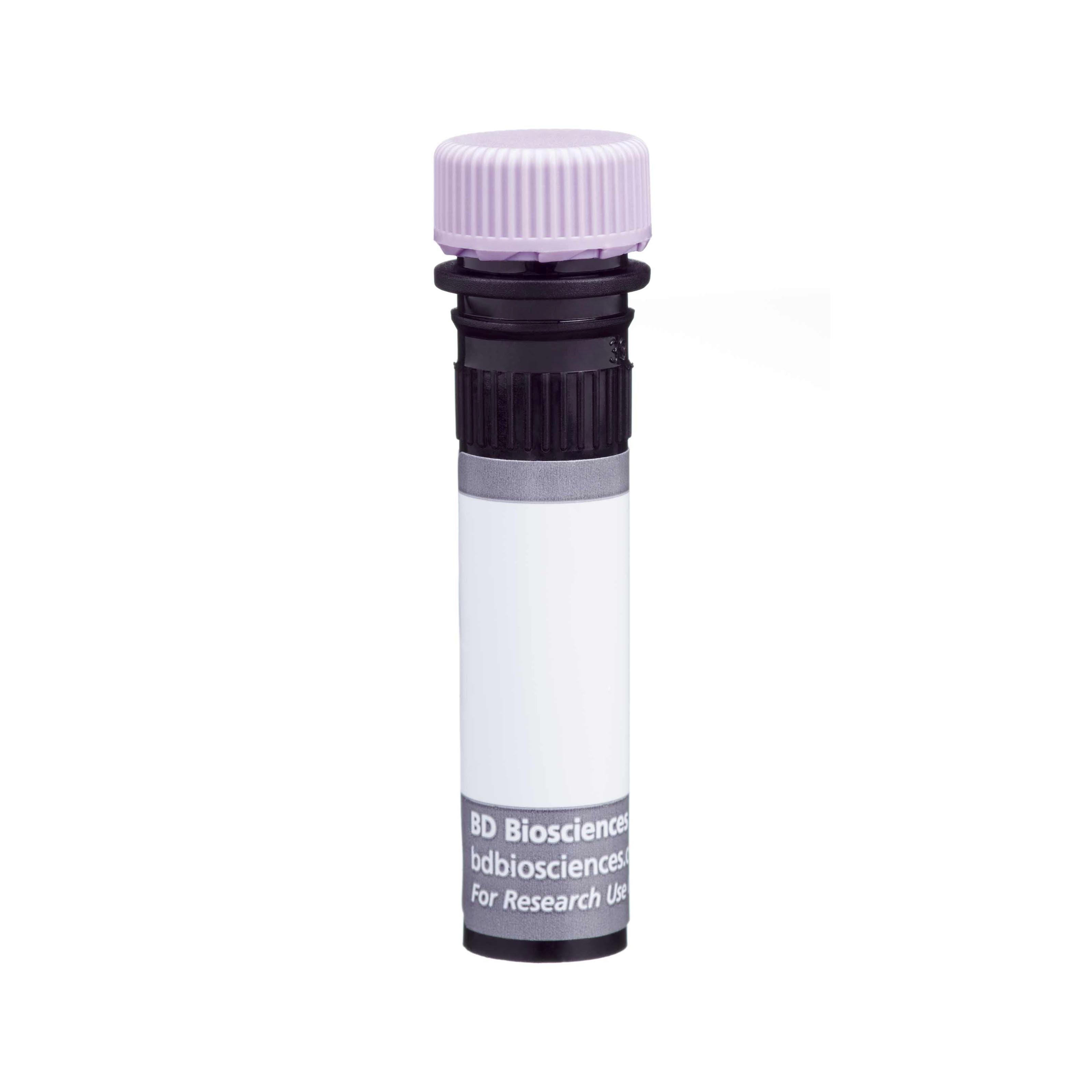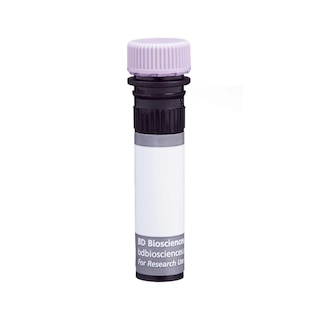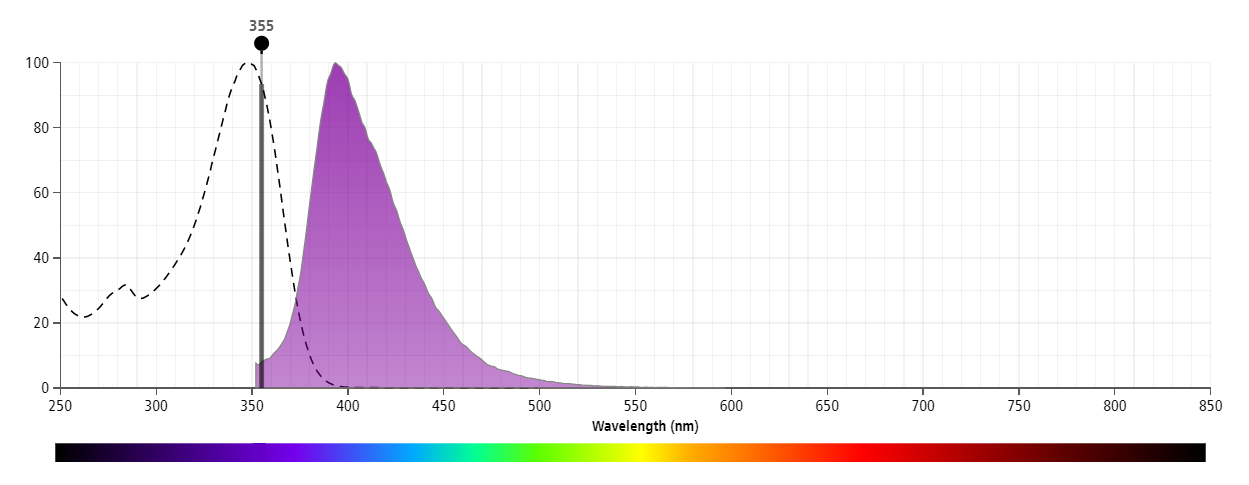-
Your selected country is
Middle East / Africa
- Change country/language
Old Browser
This page has been recently translated and is available in French now.
Looks like you're visiting us from {countryName}.
Would you like to stay on the current country site or be switched to your country?




Flow cytometric analysis of CD195 expression on human peripheral blood lymphocytes. Whole blood was stained with either BD Horizon™ BUV395 Mouse IgG2a, κ Isotype Control (Cat. No. 563809; dashed line histogram) or BD Horizon BUV395 Mouse Anti-Human CD195 antibody (Cat. No. 565224 ; solid line histogram). Erythrocytes were lysed with BD FACS Lysing Solution (Cat. No. 349202). The fluorescence histograms were derived from events with the forward and side light-scatter characteristics of intact lymphocytes. Flow cytometry was performed using a BD LSRFortessa™ Cell Analyzer System.


BD Horizon™ BUV395 Mouse Anti-Human CD195

Regulatory Status Legend
Any use of products other than the permitted use without the express written authorization of Becton, Dickinson and Company is strictly prohibited.
Preparation And Storage
Product Notices
- This reagent has been pre-diluted for use at the recommended Volume per Test. We typically use 1 × 10^6 cells in a 100-µl experimental sample (a test).
- An isotype control should be used at the same concentration as the antibody of interest.
- Caution: Sodium azide yields highly toxic hydrazoic acid under acidic conditions. Dilute azide compounds in running water before discarding to avoid accumulation of potentially explosive deposits in plumbing.
- Source of all serum proteins is from USDA inspected abattoirs located in the United States.
- For fluorochrome spectra and suitable instrument settings, please refer to our Multicolor Flow Cytometry web page at www.bdbiosciences.com/colors.
- Please refer to www.bdbiosciences.com/us/s/resources for technical protocols.
Companion Products



The 2D7/CCR5 monoclonal antibody specifically binds to the human chemokine receptor CCR5, also known as CD195. CCR5 is a seven transmembrane-spanning G protein-associated molecule that belongs to the beta chemokine receptor family and expressed on a subset of T lymphocytes (CD3+CD45RO+CD95+). CCR5 regulates lymphocyte chemotaxis activation and transendothelial migration during inflammation by signaling a response to at least three chemokines: Regulated upon Activation Normal T-cell Expressed and Secreted (RANTES), Macrophage Inflammatory Protein-1 (MIP-1), and Monocyte Chemoattractant Protein 2 (MCP-2). Additionally, CCR5 has been found to be a coreceptor for macrophage-tropic HIV-1 on CD4+ cells, a characteristic that is important in viral transmission. Reports indicate that individuals who have partial (heterozygous) or complete (homozygous) deletion of the CCR5 allele demonstrate resistance to HIV infection. This antibody has been shown to block ligand and gp120 binding. It is also able to neutralize HIV infection.
The antibody was conjugated to BD Horizon BUV395 which has been exclusively developed by BD Biosciences as an optimal dye for use on a 355 nm laser equipped instrument. With an Ex Max at 348 nm and an Em Max at 395 nm, this dye has virtually no spillover into any other detector. BD Horizon BUV395 can be excited with a 355 nm laser and detected with a 379/28 filter.

Development References (10)
-
Choe H, Farzan M, Sun Y, et al. The beta-chemokine receptors CCR3 and CCR5 facilitate infection by primary HIV-1 isolates. Cell. 1996; 85(7):1135-1148. (Biology). View Reference
-
Dambra PP, Loria MP, D'Oronzio L, et al. The Cytokine Receptor Panel: Flow cytometry analysis on lymphocytes from neonates, young, aged normal donors, and from patients with HIV infection or AIDS. In: Mason D. David Mason .. et al., ed. Leucocyte typing VII : white cell differentiation antigens : proceedings of the Seventh International Workshop and Conference held in Harrogate, United Kingdom. Oxford: Oxford University Press; 2002:269-271.
-
Deng H, Liu R, Ellmeier W, et al. Identification of a major co-receptor for primary isolates of HIV-1. Nature. 1996; 381(6584):661-666. (Biology). View Reference
-
Doranz BJ, Rucker J, Yi Y, et al. A dual-tropic primary HIV-1 isolate that uses fusin and the beta-chemokine receptors CKR-5, CKR-3, and CKR-2b as fusion cofactors. Cell. 1996; 85(7):1149-1158. (Biology). View Reference
-
Dragic T, Litwin V, Allaway GP, et al. HIV-1 entry into CD4+ cells is mediated by the chemokine receptor CC-CKR-5. Nature. 1996; 381(6584):667-673. (Biology). View Reference
-
Hancock WW. Chemokines and the pathogenesis of T cell-dependent immune responses. Am J Pathol. 1996; 148(3):681-684. (Biology). View Reference
-
Raport CJ, Gosling J, Schweickart VL, Gray PW, Charo IF. Molecular cloning and functional characterization of a novel human CC chemokine receptor (CCR5) for RANTES, MIP-1beta, and MIP-1alpha. J Biol Chem. 1996; 271(29):17161-17166. (Biology). View Reference
-
Uguccioni M, Willimann K. Cytokine/Chemokine Receptors: Section report. In: Mason D. David Mason .. et al., ed. Leucocyte typing VII : white cell differentiation antigens : proceedings of the Seventh International Workshop and Conference held in Harrogate, United Kingdom. Oxford: Oxford University Press; 2002:237-243.
-
Wu L, LaRosa G, Kassam N, et al. Interaction of chemokine receptor CCR5 with its ligands: multiple domains for HIV-1 gp120 binding and a single domain for chemokine binding. J Exp Med. 1997; 186(8):1373-1381. (Immunogen: Blocking, Flow cytometry, Inhibition). View Reference
-
Wu L, Paxton WA, Kassam N, et al. CCR5 levels and expression pattern correlate with infectability by macrophage-tropic HIV-1, in vitro. J Exp Med. 1997; 185(9):1681-1689. (Biology). View Reference
Please refer to Support Documents for Quality Certificates
Global - Refer to manufacturer's instructions for use and related User Manuals and Technical data sheets before using this products as described
Comparisons, where applicable, are made against older BD Technology, manual methods or are general performance claims. Comparisons are not made against non-BD technologies, unless otherwise noted.
For Research Use Only. Not for use in diagnostic or therapeutic procedures.
Report a Site Issue
This form is intended to help us improve our website experience. For other support, please visit our Contact Us page.